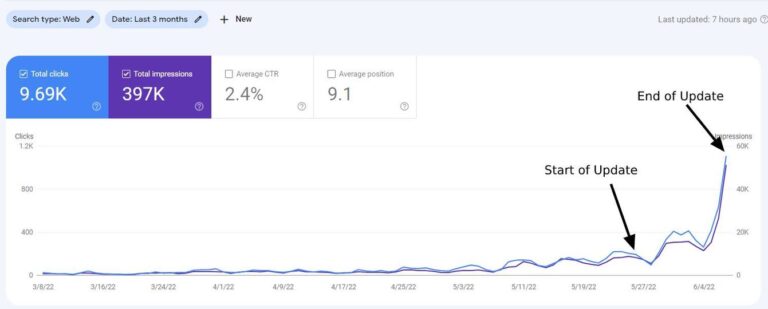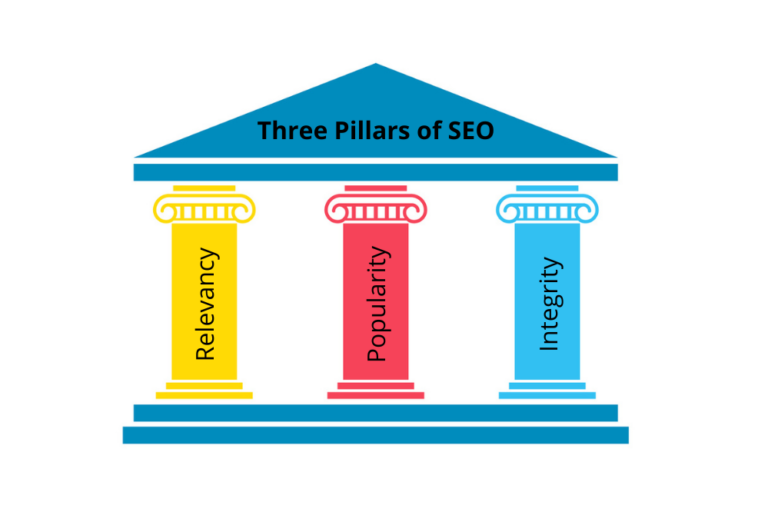At Nickel SEO, we are dedicated to keeping pace with the rapid advancements in search engine technology to provide unmatched SEO services. As digital landscapes evolve, our strategies are fine-tuned to leverage cutting-edge technologies, including artificial intelligence (AI), to enhance search efficiency and personalization for our clients.
In 2023, Google elevated its search functionalities with the launch of the Google Search Generative Experience (SGE), officially introduced as AI Overviews on May 14, 2024. This innovative feature transforms the way search queries are processed by generating not only text results but also comprehensive visual content directly linked to user inquiries—essentially crafting information on demand.
Currently accessible across the U.S. with plans for global expansion, the full integration timeline for SGE into Google’s AI suite remains under wraps. Despite the groundbreaking potential of SGE, it naturally raises questions about its dependability and impact on business operations.
Here at Nickel SEO, we’ve crafted this guide to navigate the nuances of Google SGE, elucidating its functionalities and what it means for your business’s online strategy, ensuring you stay ahead in the SEO game.
What Generative AI is and How We Use It
Generative AI refers to a subset of artificial intelligence technologies capable of generating new content, from text and images to music and code, based on training data they have been fed. This capability to produce novel creations makes generative AI distinct from traditional AI models that generally predict outcomes based on specific inputs.
Core Concepts of Generative AI
1. Machine Learning Models: At the heart of generative AI are machine learning models like Generative Adversarial Networks (GANs) and Variational Autoencoders (VAEs). These models are trained on large datasets to generate new data instances that are indistinguishable from the original data.
2. Training Process: Generative AI models undergo a rigorous training process where they learn to recognize and replicate the complex patterns and features of the training data. For instance, a generative model trained on photographs can learn to produce new images that look like they could have been real photographs.
3. Applications in Diverse Fields: Generative AI has applications across various fields:
- In art, AI algorithms can create new pieces of artwork that mimic the styles of historical artists.
- In music, these systems can compose original scores in various musical styles.
- In content creation, AI tools can write coherent and contextually relevant articles or assist in creating engaging marketing copy.
Advanced Techniques and Tools
1. Transformers: Introduced by Google, transformers are a type of neural network architecture that has significantly improved the performance of generative models, particularly in natural language processing. They are behind the success of models like GPT (Generative Pre-trained Transformer) and BERT (Bidirectional Encoder Representations from Transformers).
2. Fine-tuning: Beyond initial training, generative AI models can be fine-tuned on specific datasets to adapt to particular styles or content types. This process makes them extremely versatile tools for custom content generation.
3. Multimodal Capabilities: Some of the latest advancements include multimodal abilities where AI models can understand and generate outputs that combine text, image, and sound. These capabilities allow for more complex and integrated AI applications.
Ethical Considerations and Challenges
While generative AI opens up vast possibilities, it also presents significant challenges:
- Authenticity Concerns: As AI becomes better at generating realistic images, videos, and stories, distinguishing between what is real and what is AI-generated becomes more difficult.
- Copyright Issues: The ease with which content can be replicated or mimicked poses serious questions about intellectual property rights and the originality of AI-created works.
- Bias and Fairness: AI systems can inadvertently perpetuate biases present in their training data, leading to unfair or prejudiced content generation.
Generative AI continues to evolve rapidly, pushing the boundaries of what machines can create. By leveraging advanced neural network architectures and expansive datasets, these technologies are not only transforming artistic and creative industries but are also reshaping the landscape of information dissemination, marketing, and communication. As we harness these powerful tools, ongoing attention to ethical implications and the development of robust frameworks for responsible AI use will be critical.
What is Google SGE?
Google Search Generative Experience (SGE), introduced as AI Overviews in May 2024, represents a significant evolution in Google’s search capabilities by integrating advanced artificial intelligence (AI) technologies. This feature enhances the traditional search engine model by not only retrieving but also generating new, contextually relevant content based on user queries.
Here’s a breakdown of how Google SGE operates:
- Generative AI Technology: At the heart of SGE is a generative AI model, which is capable of synthesizing text and even images directly from vast data troves. Unlike traditional search algorithms that merely fetch existing content from the web, this generative model creates fresh, synthesized responses that encapsulate essential information pertinent to the search queries.
- Enhanced User Interaction: Google SGE allows for a more interactive search experience. Users can pose complex questions and receive summarized answers that are directly generated by AI. This can include everything from simple definitions to comprehensive explanations, which are crafted in real-time to address the specific inquiry.
- Links to Further Information: In addition to providing generated content, SGE also includes links to external sources. This allows users to delve deeper into topics if they wish, providing a gateway to more detailed information while still offering a concise overview within the search results.
- Broad Accessibility: Initially rolled out in the U.S., Google plans to expand the availability of SGE globally. This approach aims to democratize access to information, ensuring that users worldwide can benefit from AI-driven search enhancements.
- Concerns and Reliability: Despite its innovative approach, SGE has stirred discussions regarding its reliability and the accuracy of the content it generates. Google has addressed these concerns by implementing rigorous data verification processes and continuous updates to improve the model’s accuracy and reliability.
Google SGE is part of a broader trend of integrating AI into everyday digital tools, reflecting Google’s commitment to enhancing user experience by leveraging cutting-edge technology. As SGE continues to evolve, it is expected to become an integral part of Google’s search ecosystem, fundamentally changing how information is sought and consumed online.
Google’s journey towards creating the Search Generative Experience (SGE) reflects its longstanding commitment to enhancing its search capabilities through the integration of advanced technologies, particularly artificial intelligence (AI). Here’s a detailed overview of how Google SGE started:
Early Foundations in AI Integration
Google’s foray into integrating AI with search began well before the official rollout of SGE. Over the years, Google has consistently aimed to improve the accuracy, speed, and relevance of its search results by leveraging various AI technologies:
- Machine Learning Enhancements (Early 2000s):
- Google started using machine learning to refine its search algorithms, improving how search queries were interpreted and how results were ranked.
- Introduction of Google Brain (2010s):
- This deep learning artificial intelligence research team was tasked with integrating AI into various Google products, including search.
- Hummingbird and RankBrain:
- Launched in 2013, Hummingbird was a significant update that allowed Google to better understand the intent behind queries. Following this, RankBrain was introduced in 2015 as a machine learning algorithm to provide more relevant search results.
Breakthroughs Leading to SGE
The path to SGE was paved by several key developments in Google’s AI integration:
- BERT (Bidirectional Encoder Representations from Transformers):
- Deployed in 2019, BERT was a major leap forward. It enabled Google Search to better understand the nuances and context of words in search queries, significantly enhancing the ability to provide results that better matched user intentions.
- MUM (Multitask Unified Model):
- Introduced in 2021, MUM was capable of understanding and generating language across 75 different languages. It was a multimodal system that could analyze text, generate images, and understand information from various formats, laying the groundwork for more complex search query responses.
Experimental Phase and Public Testing
- Search Labs and Early Testing:
- Google used its platform, Search Labs, to test early versions of what would become SGE. This allowed them to gather user feedback and iteratively improve the technology.
- Public Rollout and Adjustments:
- By late 2023, after extensive testing and development, Google began to incorporate AI-generated search result previews, known as AI Overviews, into its standard search offerings. This feature provided users with a new way to interact with information, combining Google’s robust search capabilities with generative AI to create concise summaries and related content suggestions directly in the search results.
Google’s Search Generative Experience started as a natural progression of its efforts to harness AI to improve the efficiency and effectiveness of its search engine. By building on past innovations and continuously adapting to new technological advancements, Google has maintained its position at the forefront of search technology, with SGE representing the latest milestone in its ongoing evolution.
How Google Search Generative Experience Works
The Google Search Generative Experience (SGE), also known as AI Overviews, represents a significant advancement in how users interact with search engines. By integrating generative artificial intelligence (AI), Google has transformed the traditional search process into a dynamic, interactive experience that not only retrieves but also generates comprehensive, context-rich content. Here’s a detailed look at how SGE functions:
1. AI-Generated Summaries
SGE utilizes Google’s advanced AI algorithms to generate concise summaries directly from search queries. Unlike traditional search results that simply list relevant web pages, SGE provides synthesized responses that amalgamate information from various credible sources across the web. These summaries aim to deliver direct answers and pertinent information, minimizing the need for users to click through multiple pages.
2. Deep Integration with Google’s Knowledge Base
At the core of SGE is its deep integration with Google’s vast repository of indexed information. By leveraging this extensive database, the AI can pull data from a multitude of verified sources to create accurate and comprehensive summaries and responses.
3. Real-Time Data Processing
SGE processes user queries in real-time, utilizing Google’s powerful servers and AI models. This allows the system to analyze and understand the query, search for relevant information, and generate a response swiftly, often within seconds.
4. Contextual Understanding and Response Generation
The AI model behind SGE is designed to understand the context and intent behind user queries. It uses natural language processing (NLP) techniques to grasp the nuances of language, ensuring that the generated responses are not only relevant but also contextually appropriate.
5. Interactive Query Refinement
One of the standout features of SGE is its ability to facilitate interactive query refinement. If the initial AI-generated overview does not fully satisfy the user’s needs, the system allows users to ask follow-up questions without needing to leave the search page. This feature makes the search process more conversational and tailored to individual user requirements.
6. Use of Multimodal Capabilities
In addition to text, SGE can integrate multimodal data into its responses, including images, video clips, and graphs. This capability ensures that the answers provided are enriched with visual aids when necessary, enhancing understanding and engagement.
7. Feedback Loop for Continuous Improvement
Google has implemented a feedback system within SGE, allowing users to rate the usefulness of responses and provide suggestions for improvements. This feedback is crucial for the ongoing training and refinement of the AI models, ensuring that the system evolves and adapts to user needs over time.
8. Adherence to Privacy and Ethical Guidelines
SGE is built with a strong emphasis on user privacy and ethical guidelines. The system is designed to handle data responsibly, ensuring that personal information is protected and that the content generated is unbiased and fair.
9. Integration with Google Ads
While SGE prioritizes providing valuable information, it also seamlessly integrates with Google Ads. This integration ensures that while users receive comprehensive AI-generated content, advertisers still have the opportunity to reach their target audience through strategically placed ads.
Through these mechanisms, Google’s Search Generative Experience offers a revolutionary way to interact with information, making the search process more efficient, personalized, and user-friendly. This advancement not only enhances user satisfaction but also sets a new standard for what users can expect from search engines in the future.
What To Expect from Future SGE Versions
As Google continues to innovate and evolve its Search Generative Experience (SGE), several advancements are likely on the horizon. These future iterations will not only refine existing features but also introduce new functionalities that can transform how users interact with search engines and access information. Here’s what businesses and users can anticipate from upcoming versions of SGE:
1. Enhanced Understanding of Complex Queries
Future versions of SGE are expected to exhibit an even greater ability to understand and process complex queries. This involves multi-step reasoning where the AI can handle layered questions with multiple variables. For instance, a query like “What are the best hypoallergenic pets for small apartments in urban areas?” would require the AI to consider multiple factors like pet size, allergen levels, and suitable living conditions, providing a well-rounded answer.
2. Greater Personalization
As AI technology advances, so too does its capacity for personalization. Future SGE versions might be able to tailor search results more precisely according to individual user preferences, search history, and local context. This means that two different users querying the same thing might receive customized responses that best fit their unique circumstances or past interactions.
3. Improved Multimodal Responses
Expect future versions of SGE to push the envelope on multimodal responses, incorporating more varied data types like videos, interactive content, and real-time data into search results. This would make the search experience richer and more engaging, allowing users to get a fuller understanding of their queries through diverse media formats.
4. Integration with Emerging Technologies
SGE is likely to integrate more seamlessly with other emerging technologies like augmented reality (AR) and virtual reality (VR). This could mean that in the future, users might be able to explore search results in a more immersive way, such as taking virtual tours of locations or viewing products in AR before making a purchase.
5. Advanced Security Measures
As AI systems become more sophisticated, so too do the potential risks associated with data privacy and security. Future versions of SGE will likely incorporate advanced security measures to protect user data and ensure that the interactions remain secure, especially as the system begins to handle more sensitive or personal queries.
6. Deeper Industry-Specific Applications
Google may develop versions of SGE that are tailored to specific industries, offering tools and insights that are particularly valuable in fields such as healthcare, finance, education, and legal services. This specialization would make Google’s AI tools more indispensable as industry-specific solutions.
7. Broader Language Support
While SGE already supports multiple languages, future enhancements may include broader language capabilities, especially for underrepresented languages and dialects. This would make SGE accessible to a wider global audience, democratizing access to information.
8. Feedback-Driven Iterations
Google will continue to refine SGE based on user feedback and behavioral data. This iterative approach ensures that each version of SGE is more user-centric and effective than the last, adapting to the changing needs and behaviors of its users.
9. Ethical AI Usage
As AI continues to influence more aspects of daily life, ethical considerations will remain at the forefront of technology development. Future versions of SGE will need to address ethical issues head-on, ensuring that AI is used responsibly and that its benefits are equitably distributed.
10. Cross-Platform and Device Integration
Expect future versions of SGE to be more integrated across different platforms and devices, providing a seamless user experience whether one is using a smartphone, tablet, desktop, or even smart home devices.
By staying ahead of these advancements, businesses, especially those reliant on digital marketing and SEO, can better prepare to leverage these technologies. Adapting to and anticipating the evolution of SGE will be crucial for maintaining competitive advantage and ensuring that one’s digital presence remains strong in a rapidly changing landscape.
How AI Overviews/SGE Results Appear on Search
The Google Search Generative Experience (SGE), through its AI Overviews, fundamentally alters the traditional search results layout by incorporating AI-generated content at the forefront of search engine results pages (SERPs). This feature aims to provide comprehensive, succinct summaries directly in response to user queries. Here’s a detailed look at how these AI Overviews manifest within Google Search:
1. Presentation of AI Overviews
AI Overviews are prominently displayed at the top of the SERP, taking precedence over traditional organic listings. This positioning ensures that users see AI-generated content first, potentially providing immediate answers without the need for further clicks. The Overviews often include a combination of text, images, and links, creating a rich snippet that addresses the user’s query with depth and relevance.
2. Variability in Display
The exact appearance of AI Overviews can vary based on the query. Google uses different formats to best suit the information being presented:
- Collapsed View: In some cases, the Overview is initially shown in a collapsed format with a “Show more” option. This allows users to get a glimpse of the information and choose to expand the content if it seems relevant to their needs.
- Full Display: For other queries, the full content of the AI Overview might be displayed immediately, providing comprehensive information at first glance without requiring additional clicks.
3. Interactive Elements
AI Overviews are designed to be interactive, allowing users to delve deeper into topics without leaving the search page. This interactivity includes:
- Follow-Up Questions: Users can ask follow-up questions directly from the Overview, which prompts the AI to generate further tailored content. This feature encourages a conversational interaction, enhancing the search experience.
- Related Searches: AI Overviews may also suggest related searches or topics, guiding users to explore adjacent areas of interest, which helps in broadening the context or deepening the understanding of the subject.
4. Integration with Other Search Features
Despite the prominent placement of AI Overviews, traditional search features continue to exist. Below the AI-generated content, users will still find organic search results, ads, and other familiar SERP features like Knowledge Panels or Local Packs. This ensures that while AI Overviews provide a novel and direct answer approach, the conventional search functionalities remain accessible for users who wish to explore more traditional results.
5. Dynamic Content Generation
The content within AI Overviews is dynamically generated based on the latest models and algorithms that Google employs. This means the Overview content is not static but is continually updated based on new information, trends, and user interactions. This dynamic nature ensures that the AI Overviews remain accurate and relevant, reflecting the latest data available.
6. Source Attribution
To maintain transparency and reliability, AI Overviews typically include citations or links to the sources from which the information is derived. This practice not only credits the original content creators but also allows users to verify the information and explore topics further directly from the source materials.
7. Visual and Textual Cues
Google designs AI Overviews with clear visual and textual cues to distinguish them from other types of search results. This might include different background colors, distinct typography, or special icons that signify the generative nature of the content. These design choices help users quickly identify AI-generated summaries and understand their context within the broader search landscape.
The introduction of AI Overviews represents a significant shift in how information is presented and interacted with on Google Search. By understanding how these Overviews appear and function, businesses and SEO strategists can better prepare and optimize their content to align with these new dynamics, potentially capturing the attention of users right at the top of the SERPs.
SGE’s Impact on Businesses
The rollout of Google’s Search Generative Experience (SGE), or AI Overviews, is reshaping the digital marketing landscape, presenting new challenges and opportunities for businesses aiming to maintain and enhance their online presence.
Visibility and Competition
Firstly, SGE introduces a new layer of competition for visibility on Google’s search results pages. AI-generated content, prominently displayed at the top of search results, can push traditional organic listings further down the page. This shift necessitates businesses to optimize their content not just for search algorithms but also to be potentially featured in AI Overviews, thus influencing both visibility and click-through rates.
Changing User Engagement
Moreover, SGE can alter user engagement patterns. The comprehensive summaries provided by AI Overviews might reduce the number of clicks to actual websites as users get the answers they need directly on the search results page. This could lead businesses to focus more on being the source of these concise, informative snippets to maintain traffic and engagement.
Enhanced Credibility and Authority
On the flip side, there is an opportunity for businesses to be seen as authoritative sources if their content is regularly featured in AI Overviews. This could enhance brand credibility and authority, especially for niche markets or specialized topics where quality and depth of information are critical.
Need for Agile SEO Strategies
Additionally, the dynamic nature of SGE means that businesses must stay agile with their SEO strategies. As Google continues to refine this technology, strategies that work today might not hold the same efficacy tomorrow. Keeping abreast of how SGE evolves will be crucial for businesses to adapt their digital marketing efforts effectively.
In essence, Google SGE is not just another feature—it’s a pivotal change in how search queries are answered and how businesses need to strategize their online presence. For clients at Nickel SEO, understanding and adapting to these changes is vital for leveraging SGE’s capabilities to enhance visibility and authority in a highly competitive digital space.
Our Strategy for Increasing Our Clients Sales Against Generative AI
At Nickel SEO, our strategy for maximizing rankings in Local SEO amidst the evolving landscape of AI-generated content involves a multifaceted approach. This strategy ensures that our clients not only maintain their competitive edge but also capitalize on the opportunities presented by new technologies like Google’s Search Generative Experience (SGE). Here’s how we tackle the challenge:
Emphasizing High-Quality, Localized Content
One core element of our strategy is to produce high-quality, localized content that resonates deeply with the target audience. Unlike AI, which generates generalized content, our focus is on creating detailed, niche-specific content that addresses the specific needs, questions, and concerns of local customers. This includes:
- In-depth Articles and Guides: Crafting comprehensive resources that delve into local issues, services, or products more thoroughly than AI overviews can.
- Community Engagement: Featuring local events, news, and activities that are directly relevant to the community we’re targeting, fostering a connection that AI-generated content cannot replicate.
Leveraging Structured Data for Enhanced Visibility
To enhance visibility and ensure our content stands out, especially in AI-dominated search results, we meticulously implement structured data across client websites. This not only helps in organizing content in a way that search engines can understand but also enhances the chances of appearing in rich snippets and direct answers, areas where AI overviews are prominent.
Continuous Monitoring and Adaptation
Understanding that Google’s algorithms and AI capabilities are continuously evolving, we commit to ongoing monitoring and quick adaptation of our SEO strategies. This proactive approach allows us to:
- Identify Shifts in AI Behavior: Keeping track of how AI overviews change the landscape and adjusting our tactics accordingly.
- Update Content Regularly: Refreshing existing content to keep it relevant and authoritative, thus maintaining its value against the concise summaries provided by AI.
Protecting Website Content
To safeguard our clients’ intellectual property from being indiscriminately used by AI bots, we implement several protective measures:
- Robots.txt Modifications: Adjusting this file to control what content AI crawlers can access.
- Noindex Tags: Applying these tags to sensitive or exclusive content that we do not want appearing in search engine indexes or AI summaries.
- Detailed Copyright Notices: Making copyright information clear and visible to deter misuse and establish legal grounds against unauthorized AI use.
Educating and Empowering Clients
We believe in empowering our clients with knowledge about the latest in SEO and AI changes. By educating them on how AI impacts their online visibility and the steps we are taking to address these challenges, we foster a collaborative approach. This includes:
- Regular Updates and Workshops: Keeping clients informed through newsletters, workshops, and reports on AI developments.
- Transparency in Strategy: Openly discussing the methodologies we use, why we use them, and how they protect and enhance the client’s digital footprint.
By focusing on these strategic areas, Nickel SEO ensures that our clients not only survive but thrive in an increasingly AI-dominated digital environment. Our goal is to leverage AI advancements to our advantage while maintaining the human touch that makes local and niche content genuinely valuable.






